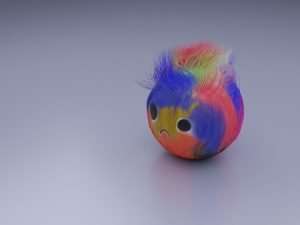Art was created to display the beauty of the human form. It celebrates the human body and encourages us to appreciate the differences and similarities between men and women. The Feminist Art Movement is a broad term used to describe art created by feminists, in reaction against traditional perceptions of women and art.
‘the goal of feminist artists from the 1960s onwards was not simply to define a style or aesthetic, but rather to “be an artist” and create work that reflected their own experiences.’
Art has been and still is a major vehicle by which society expresses itself. In some societies, art was used to represent the social hierarchies of that time. The opportunity for women to create art was limited and even prohibited in some cultures; the male-dominated society decided what the women could create and what they couldn’t. Many of the great painters were men, and many of the great sculptures were made by men – not only because they were men but also because they had access to education and training.
The Feminist Art Movement
In response to this unfair situation, feminist artists wanted to take control of their own artistic expression and began creating art that portrayed women’s realities from a woman’s point of view. They also wanted to change how art was created, so more women had an opportunity to be a part of it.
https://en.wikipedia.org/wiki/Feminist_art
The art world is changing, and it is moving towards a place where there are more opportunities available to women. It is an exciting time to be in the field as a female artist; however, there still exists a lot of sexism. These articles seek to challenge the current status quo of sexism in the art world by encouraging debate and discussion on how things can be made better.
The art world should become more inclusive, and these articles will help facilitate that change.
A blog created by an anonymous feminist artist in the hopes to create a strong online community for female artists.
Feminist art is an art movement that emerged in the 1970s as an offshoot of second-wave feminism. In general, feminist art addresses issues of gender inequality and seeks to promote the development of women’s art. The movement encouraged women to challenge traditional definitions of gender roles with regard to society and art. Feminist artists have employed a wide variety of media, including photography, performance art, video, sculpture, and painting.
Towards the end of the 1960s and beginning of the 1970s, feminist activism in the United States had grown steadily more public and increasingly more hostile to male culture. At this time feminism was frequently equated with man-hating by the mainstream media and American culture as a whole; this reached its height during and after “Women’s Lib” marches such as at the 1968 Miss America protest when protesters symbolically threw feminine products into a “Freedom Trash Can”. Both in response to this critical climate towards feminism and as part of their feminism, women artists wanted to create works that were not only about themselves but were explicitly about women’s experiences. “Feminist art” became a way for these women to distance themselves from what they saw as male-dominated traditions within fine art.
In 1973 Judy Chicago organized “The Woman Made Gallery
Feminist Art from the early 1970’s, refers to the works produced by women artists. It was a movement in the art world that rejected traditional and feminine styles of painting in favor of more radical, masculine styles. The movement started in 1972 when a group of artists exhibited their works at the New York Cultural Center as “The Feminist Art Workers”.
Feminist art work is not meant to be decorative and for this reason it does not appeal to many people. The subjects are often controversial, explicit, and political. It addresses issues such as gender inequality, social inequalities, and sexuality.
The feminist art movement had many supporters; however, there were also many opponents. One of the most outspoken critics of the movement was John Berger who said that “Most feminists have an unconscious desire to be men.” He believed that women should express themselves in traditional ways and should not rely on new ways of expression. This belief was shared by some other critics like Roger Cardinal who said that feminist artists negate their femininity by adopting masculine styles.
In response to these criticisms, Judy Chicago once said that “There is a way in which feminism has been used as an excuse for bad art.” She also said that she wanted to make something beautiful which could inspire other women to create their own
In fact, it’s a powerful and stimulating movement, both in terms of its historical importance in the feminist movement and as an example of how art can function as a medium for changing society. The earliest feminist art was made by women who were artists and activists; later, men joined them. Some of the most important artworks were produced by collectives. And while many of the works are made by women, they’re not just made for women.
The movement is still alive today, especially in the form of performance art – check out the work of Cecilia Bengolea , Francesca Woodman , Ana Mendieta , Carolee Schneemann , Marina Abramovic , or Yoko Ono . There’s also a little-known tradition of feminist art history writing, which emerged after the second wave of feminism in the 70s and has been growing steadily ever since.
/Articles are presented chronologically starting from 1973 to 2012/

